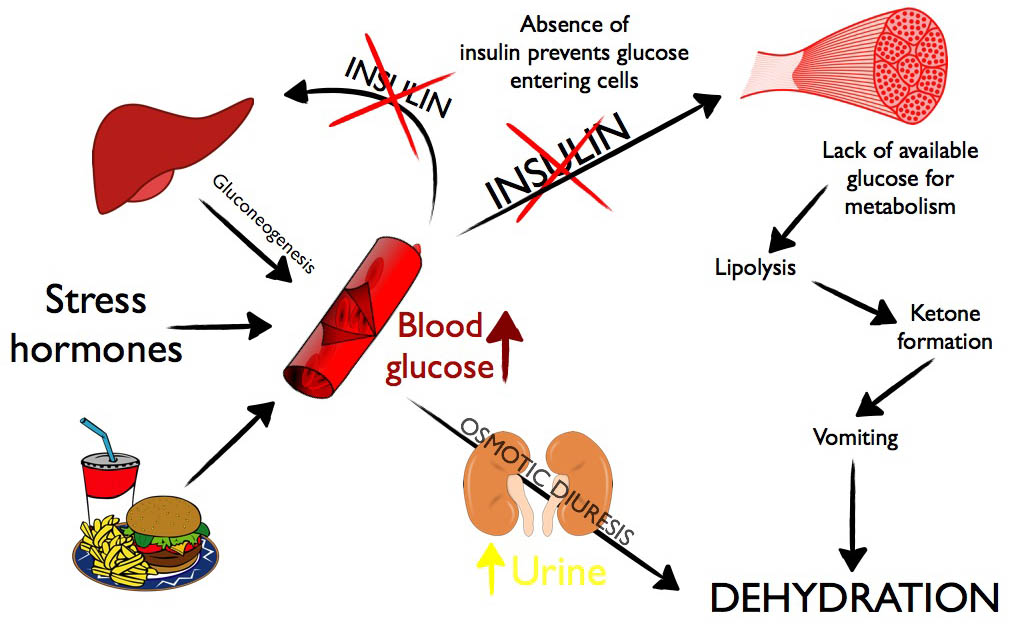What is Diabetic Ketoacidosis?

- High blood sugar (>11 mmol/L)
- Ketones AND glucose on urine dipstick (Children without diabetes get ketones too)
- Metabolic acidosis (pH <7.3 &/or Bicarb <14mmol/L)
Up to 2/3 of children with diabetes will be in DKA at the time their diabetes is first diagnosed and it is more common the younger the age of the child at presentation. It kills 3 in 1000 of those affected but the principles of treatment are simple.
As shown above, the absence of insulin drives dehydration in a number of ways:
- There is increased stress hormone release leading to increased glucose mobilisation from body stores and gluconeogenesis in the liver as well as absorption of glucose from the gut
- High blood glucose levels drive an osmotic diuresis with increased urine production
- Despite the high sugar levels in the blood, low intracellular glucose leads to fat stores being broken down to form ketones
- Ketones act on emesis centre causing nausea & vomiting
Dehydration occurs when unable to keep up fluid intake whilst passing excessive urine and vomiting
